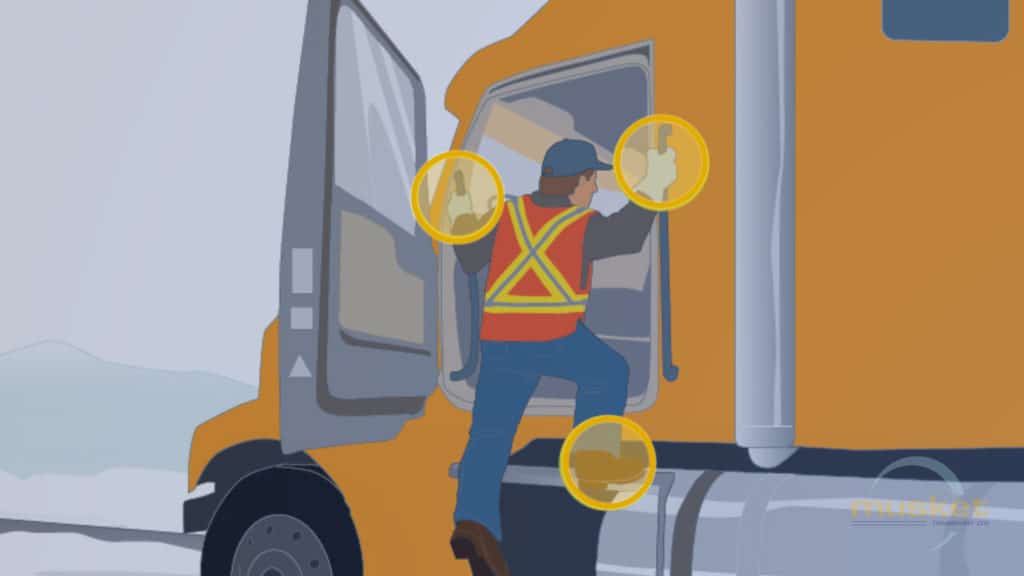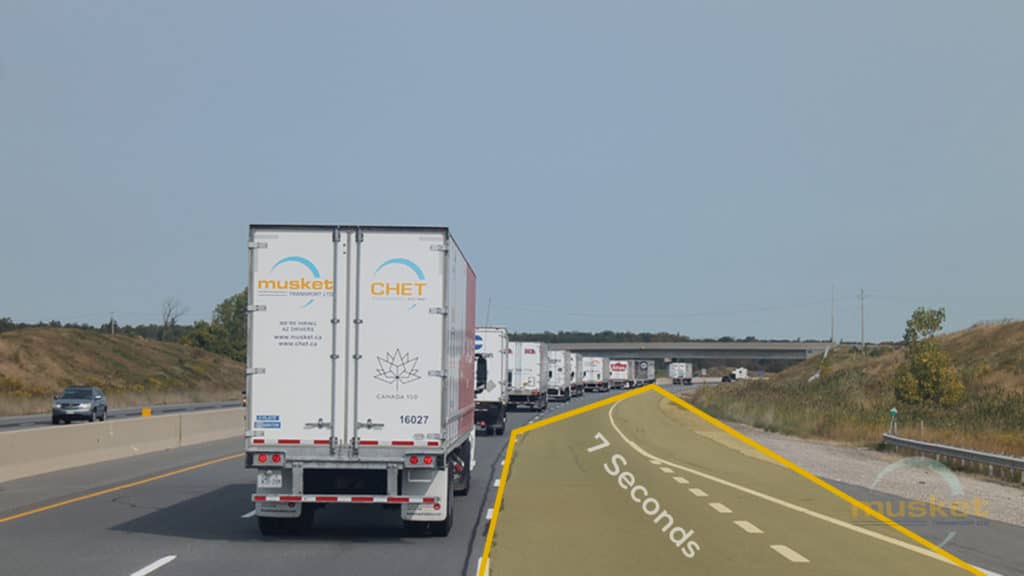Transport trucks play a huge role in sustaining Canada’s economy both within the country and across the border. However, as Canadians’ reliance on trucks increases, so do the number of accidents involving commercial vehicles. In 2018, the Ontario Provincial Police recorded 7,674 accidents involving transport trucks, 55 of which ended in fatalities. As such, it’s vital that truck drivers can confidently handle their vehicles.
The safety of our drivers and of the public are one of Musket’s top concerns, and at CHET, we ensure our drivers get the best driving education to prepare themselves for the road. In-class or virtual learning and driving simulations enable our drivers to sharpen their skills before actually heading out on the road, but it never hurts to brush up on some driving safety tips.
Here are 10 safety tips truck drivers should always keep in mind.

Three points of contact. Always remember your three points of contact when entering or exiting your vehicle, as well as when climbing onto or down from the catwalk. Your three points are either both hands and one foot or both feet and one hand in contact with the vehicle to prevent potential injuries such as slipping or tripping.

Seven-second rule. Seven seconds is the minimum distance you should keep under ideal driving conditions to prevent collisions with other vehicles so you can react appropriately in the event of a sudden stop. If roads are less than ideal – in icy or rainy weather, for example – it’s a good idea to keep more than seven seconds away.

Cruise control. Cruise control can be extremely dangerous in bad weather and on high-traffic roads, so avoid using it in such conditions or any time you need full control over your vehicle, such as on hilly roads, in school or construction zones, or around pedestrians.

Avoid distractions. Did you know that distractions contribute to over 4 million accidents in North America each year? Distractions can include anything from phone notifications to the cute dog across the street. Make sure you’re in top shape before you get on the road – in other words, make sure you’ve gotten enough sleep and have eaten before a long drive. Your phone should be set to silent, and if you have to make a phone call, pull over before doing so.

School/Construction zones. Be aware of signs around schools and construction zones, and make sure to follow speed limits for the safety of children, their parents, and construction workers who may be working or directing traffic in the area.

Don’t forget your lights. Your truck’s visibility is important to both your and the public’s safety. Keep your headlights clean, and make sure they’re visible at all times.

Safe loading & unloading practices. Before hitting the road, double-check that vehicles and freight are properly secured. Check again before unloading, make sure your tractor has been turned off, and apply tractor and trailer parking brakes. Before pulling out of a loading dock, make sure no one is still working in the trailer and that no equipment has been left nearby.

Seatbelts. In 2018, approximately 30% of accident fatalities involved either drivers (29.4%) or passengers (32.1%) not wearing their seatbelts. Seatbelts save about 1,000 lives each year in Canada, so always wear yours when the vehicle is moving. If you’re a sleeper-berth occupant, you should always wear all necessary safety belts and restraints when the truck is operating, and only occupy the upper bunk when the truck is parked.

Speed limit. Always drive at the speed according to the road on which you are traveling, never exceeding 100 km/hour and keeping in mind the seven-second rule above. Adjust your speed to account for poor weather conditions or high-traffic areas.

Sunglasses. Be it summer or winter, sun can be a huge distractor for drivers. Wear sunglasses with polarized lenses to protect your eyes from the glare of the sunset or the light reflecting off the snow and keep other drivers safe. And always remember to remove your sunglasses when entering a tunnel or after sunset.
Even the safest, most experienced drivers risk getting into accidents every now and then, so it’s vital to brush up on your driving safety every so often. Keep these 10 tips in mind and you’ll ensure both your own safety and that of the other drivers on the road.


